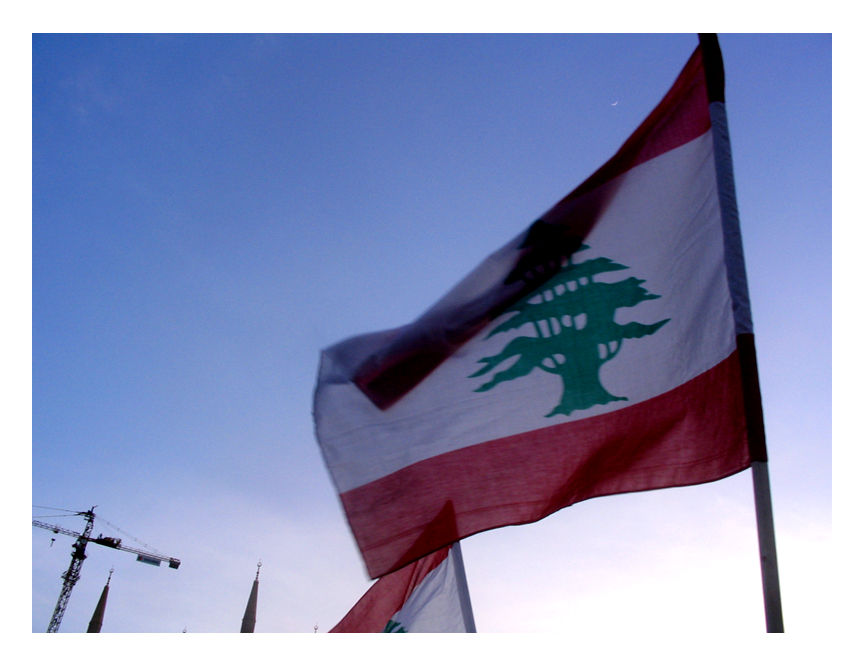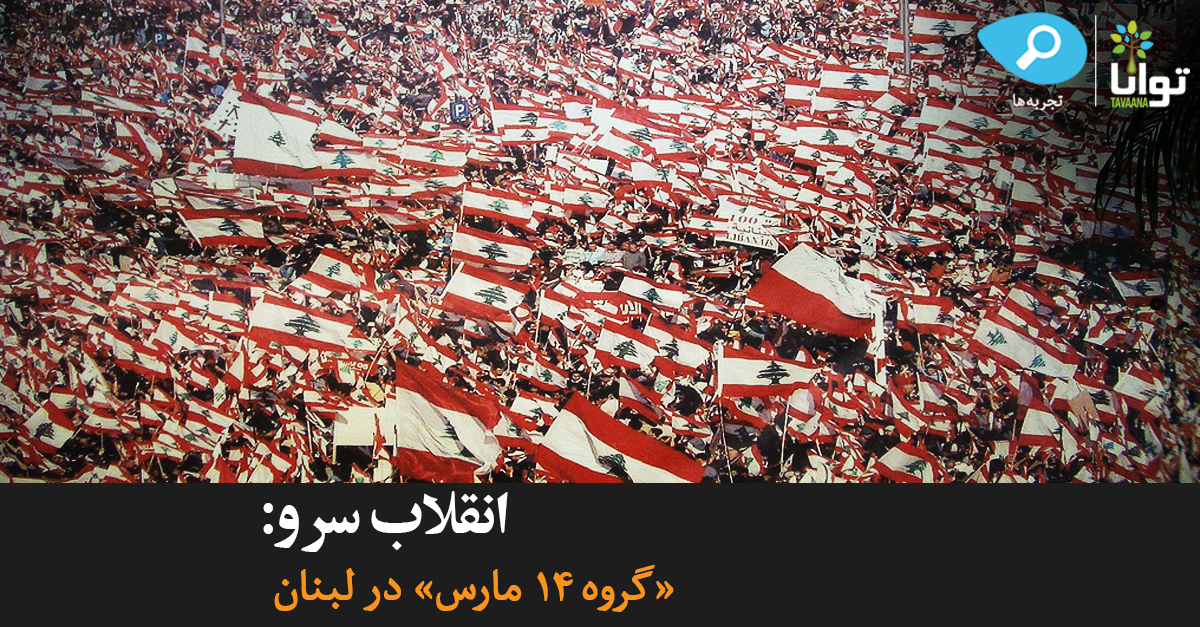Vision and Motivation
 Though the Lebanese Civil War ended in 1989 with the signing of the Taif Accords, Syria’s role in Lebanese politics only escalated when al-Mukhabarat, Syria’s intelligence services, were tasked with preventing popular dissent, banning anti-Syrian media, political parties and gatherings while harassing and arresting opposition leaders throughout the 1990’s and early 2000’s.
Though the Lebanese Civil War ended in 1989 with the signing of the Taif Accords, Syria’s role in Lebanese politics only escalated when al-Mukhabarat, Syria’s intelligence services, were tasked with preventing popular dissent, banning anti-Syrian media, political parties and gatherings while harassing and arresting opposition leaders throughout the 1990’s and early 2000’s.
Rafik Hariri, the popular Sunni businessman turned politician and Lebanese prime minister credited with rebuilding Beirut after the Civil War, was often at odds with the regime in Damascus. When Syria pressured Hariri to renew the term of pro-Syrian President Emile Lahoud in late 2004, Hariri decided to step down as prime minister. Less than four months later, on February 14, 2005, Hariri and 20 others were killed in a car bomb targeting Hariri’s motorcade, a political event known as the earthquake for its massive galvanization of public dissent.[1]
This galvanization came to be called the Cedar Revolution.
Goals and Objectives
According to Cedar Revolution activist Asma Andraos, who saw Hariri’s death as the principal catalyst for change, “I just thought, who do these people think they are? I mean, you can’t just come here in the middle of the day, in the middle of our city, blow up a man of this importance, killing I don’t know how many other people in your way, and get away with it.”[2]
Despite Lebanon’s bloody political history, the Cedar Revolution chose a path of nonviolent civic engagement to achieve their four main objectives: (1) resignation of the ruling Lebanese government, (2) military withdrawal of the Syrians, (3) an international UN tribunal to investigate Hariri’s death, and (4) resignation of the heads of the intelligence services.[3]
On February 15, just two days after Hariri’s assassination, 150,000 of his supporters accompanied his funeral procession, with chants of “Syria out! Syria out!”[4] On February 21, in what would become the largest nonviolent movement in the history of Lebanon, 20,000 activists marched from the St. Georges Hotel, where Hariri died, to Martyrs’ Square in central Beirut. Demonstrations calling for Syria’s withdrawal continued every week through late March.[5] Once the demonstrations became regular, a group of approximately 500 youth activists slept at Martyrs’ Square for over two months and established a tent city that became known as the ‘Freedom Camp.’[6]
 With daily protests numbering up to 25,000, the government declared a crackdown on public demonstrations on February 27, but in a true sign of their nonviolent approach to activism, protestors placed flowers in the barrels of the guns of Lebanese soldiers who had been sent to shut down the Freedom Camp at Martyrs’ Square.[7] The next day, when pro-Syrian Prime Minister Omar Karami resigned, protestors in Martyrs’ Square rejoiced and chanted “Karami has fallen, your turn will come Lahoud, and yours, Bashar!”[8]
With daily protests numbering up to 25,000, the government declared a crackdown on public demonstrations on February 27, but in a true sign of their nonviolent approach to activism, protestors placed flowers in the barrels of the guns of Lebanese soldiers who had been sent to shut down the Freedom Camp at Martyrs’ Square.[7] The next day, when pro-Syrian Prime Minister Omar Karami resigned, protestors in Martyrs’ Square rejoiced and chanted “Karami has fallen, your turn will come Lahoud, and yours, Bashar!”[8]
Only days later, on March 2, Syrian leader Bashar Al-Assad announced that Syrian forces would withdraw completely from Lebanese territory, ending more than 30 years of occupation. In response to Assad’s move, Hezbollah organized a demonstration on March 8 that attracted half a million supporters in an effort to show its support for the Syrian regime.[9]
Five days later on March 14, the opposition rebutted with a gathering of one million Lebanese to Martyrs’ Square. They used SMS, the internet and television, to create mass mobilization.[10]
Leadership
 Asma Andraos, who until Hariri’s murder was an event planner wholly unconnected to politics, sprang to action and drafted a petition demanding Syrian withdrawal at the Freedom Camp. She helped organize La Chambre Noire or “the darkroom”, an ad hoc group that included political leaders, strategists, and public relations specialists who planned and propelled the Cedar Revolution.[11] One member of the group, Saleh Farouk, Director General of the Beirut Association for Social Development described the group’s role in the protests, “We were there to think: what to do? Who to support? How to make this work? How to support the youths in the tents? We needed to ensure that there were enough printed signs and slogans. This room was the political-logistical ‘kitchen’… We discussed how to ensure the continuity of this intifada to reach the objective of getting Syria out.”[12]
Asma Andraos, who until Hariri’s murder was an event planner wholly unconnected to politics, sprang to action and drafted a petition demanding Syrian withdrawal at the Freedom Camp. She helped organize La Chambre Noire or “the darkroom”, an ad hoc group that included political leaders, strategists, and public relations specialists who planned and propelled the Cedar Revolution.[11] One member of the group, Saleh Farouk, Director General of the Beirut Association for Social Development described the group’s role in the protests, “We were there to think: what to do? Who to support? How to make this work? How to support the youths in the tents? We needed to ensure that there were enough printed signs and slogans. This room was the political-logistical ‘kitchen’… We discussed how to ensure the continuity of this intifada to reach the objective of getting Syria out.”[12]
Civic Environment
Since the 1975 Civil War, Lebanon has been marred by violent political sectarianism between the Maronite Christians, the Sunnis and the Shi’a. Though the 1989 Taif Accords were supposed to reconcile disproportionate allotments of power, the proposed power-sharing model of allotting high-level positions and proportions of parliament to different religious groups failed to ameliorate sectarianism and disunity. At the same time, Syria’s installation of intelligence forces throughout the country strengthened its ability to manipulate Lebanese confessional politics and improve its own patronage via the various sects and political groups hungry for power. Arbitrary arrest and detention by Lebanese security forces and Syrian-backed paramilitary groups were commonplace for political dissidents and independent journalists who worked within a fiercely repressive media environment. For nearly 30 years, the Syrian regime starved the Lebanese people of their human rights, but it wasn’t until Hariri’s murder that public outrage outweighed the fear of the Syrian intelligence apparatus.[13]
Message and Audience
In order to convey a unified national message, the opposition’s demands and use of symbols and slogans had to reflect a cohesive front. Nora Jumblatt, the wife of Druze Leader Walid Jumblatt and a member of La Chambre Noire, ordered thousands of Lebanese flags and red and white striped scarves for protestors to wear, urging them to embrace their Lebanese identity with the national flag.[14] Using this theme, the PR firm Quantum Communications and its President, Eli Khoury, chose to “brand” the revolution with signs and posters in white and red which read “Independence ’05”. Khoury described how including the “’05” implied a deadline for Syrian military withdrawal.[15] These signs became a keepsake of the movement, demanding Syrian withdrawal while promoting Lebanese unity and nationalism. The Lebanese also coined their own term for the movement – Samir Frangieh, a spokesman for members of the political opposition, declared the protests an “Intifada for Independence” four days after Hariri’s death.[16]
Outreach Activities
 The overwhelmingly unified message of the opposition movement represented a new effort to bridge the divide between traditionally feuding elements of society, which was duly noted by the international community when UN Security Council members called for the full implementation of Resolution 1559, which called for the withdrawal of Syrian troops from Lebanon and the disarming of Hezbollah. In addition to statements by President Bush and President Chirac, Germany, Russia and Egypt also called for Syria’s withdrawal. Within the region, too, the movement garnered support and it was Saudi Prince Abdullah who appealed to Syrian President Assad to withdraw his troops from Lebanon.
The overwhelmingly unified message of the opposition movement represented a new effort to bridge the divide between traditionally feuding elements of society, which was duly noted by the international community when UN Security Council members called for the full implementation of Resolution 1559, which called for the withdrawal of Syrian troops from Lebanon and the disarming of Hezbollah. In addition to statements by President Bush and President Chirac, Germany, Russia and Egypt also called for Syria’s withdrawal. Within the region, too, the movement garnered support and it was Saudi Prince Abdullah who appealed to Syrian President Assad to withdraw his troops from Lebanon.
Knowing full well the role international pressure can play in civic disputes of such magnitude, the demonstrators made sure to play to both local and international audiences by making signs in both English and Arabic, giving them a more accessible brand image.[17] At the height of the protests in Beirut, similar demonstrations were being led by Lebanese expatriates all over the world, in cities such as Paris, London and Sydney, where over 10,000 people came out in support of the Cedar Revolution.[18]
Keeping its word, Syria began its withdrawal in late March and finished removing its 14,000 troops by the end of April 2005. While Lebanon still teeters on the cusp of democracy today, the Cedar Revolution proved that a non-violent civic movement in the Middle East can generate enough domestic momentum and international support to counter power politics at the highest levels of even the most corrupt regimes.
Learn More
News & Analysis
Humeid, Ahmad. “Branding the Cedar Revolution.” 360°East. 9 March, 2005.
Morley, Jefferson. “The Branding of Lebanon’s ‘Revolution.’” The Washington Post. 3 March, 2005.
Wilson, Scott. “Syria Supporters Rally in Lebanon.” Washington Post. 9 March, 2005.
“2005 Freedom in the World Report: Lebanon.” Freedom House. 2005.
“2010 Freedom in the World Report: Lebanon.” Freedom House. 2010.
“Saudi Ruler Urges Syrian Pullout.” BBC. 3 March, 2005.
Books
Young, Michael. The Ghosts of Martyrs Square: An Eyewitness Account of Lebanon’s Life Struggle. New York: Simon & Schuster, 2010.
Multimedia
Masri, Mai. “Beirut Diaries Part 1 and 2.” Al Jazeera’s WITNESS. 3 Oct, 2007.
“Asma Andraos Interview.” Online Activism Institute.
“Lebanon: The Earthquake, May 2005.” Frontline World. 17 May, 2005.
Footnotes
[1] “Lebanon: The Earthquake, May 2005.” Frontline World. 17 May, 2005.
[2] “Asma Andraos Interview.” Online Activism Institute.
[3] Ibid.
[4] “Hariri’s Killing Shatters Lebanon’s Calm.” The Economist. 16 Feb. 2005.
[5] “The Cedar Revolution.” NOW Lebanon.
[6] “Asma Andraos Interview.” Online Activism Institute.
[7] Stephan, Maria J. and Rudy Jafaar. “Lebanon’s Independence Intafada: Dynamics, Achievements and Shortcomings.” 2006 Meeting of the American Political Science Association. 31 Aug – 3 Sept, 2006: 18-19.
[8] “Lebanese Ministers Forced to Quit.” BBC News. 28 Feb. 2005.
[9] Wilson, Scott. “Syria Supporters Rally in Lebanon.” Washington Post. 9 Mar. 2005.
[10] Stephan and Jafaar, pp. 23-25.
[11] Ibid., 14-15.
[12] Ibid., 14.
[13] “2005 Freedom in the World Report: Lebanon.” Freedom House. 2005.
[14] Stephan and Jafaar, pp. 17-18.
[15] Ibid.
[16] Ibid., 13.
[17] Humeid, Ahmad. “Branding the Cedar Revolution.” 360°East. 9 Mar. 2005.
[18] “Beirut Protestors Denounce Syria.” BBC News. 21 Feb. 2005.



